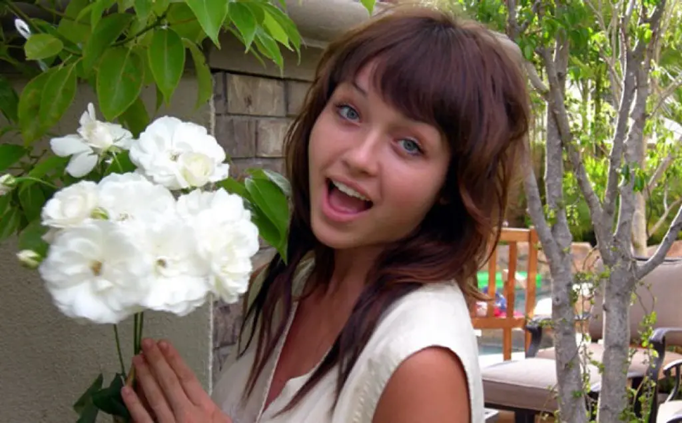The story of Nikki Catsouras is one of the most heartbreaking and disturbing tragedies of the digital age. What began as a devastating accident quickly escalated into a cautionary tale about privacy, the internet, and the lasting impact of online cruelty. Nikki’s death not only shattered her family’s life but also sparked global discussions about digital ethics, responsibility, and the darker side of social media.
This article provides a detailed look into Nikki’s life, the tragic accident, and the aftermath that changed how society thinks about online privacy.
Who Was Nikki Catsouras?
Nicole “Nikki” Catsouras was born on March 4, 1988, in Ladera Ranch, California. She was the daughter of Christos and Lesli Catsouras and had three sisters. By all accounts, Nikki was a bright, lively young woman with a passion for photography and art.
Friends and family often described her as free-spirited and warm-hearted. Like many teenagers, Nikki was still finding her place in the world, but she had a strong creative side that she expressed through her love of taking photographs.
Unfortunately, her life was cut short in a way that would later make her name known worldwide—not for her art or personality, but because of a horrific accident and its consequences.
The Fatal Car Accident
On October 31, 2006, Nikki, then 18 years old, had an argument with her parents at home. As a result, she decided to take her father’s car—a Porsche 911 Carrera—without permission. It was a powerful sports car, difficult to handle for an inexperienced driver.
Minutes later, while driving at a high speed on the 241 Toll Road in Lake Forest, California, Nikki lost control of the vehicle. Reports later revealed she was traveling over 100 mph when the car clipped another vehicle, swerved, and crashed into a toll booth.
The accident was catastrophic. Nikki died instantly from the impact. The car was destroyed, and the scene was so gruesome that authorities initially did not allow her parents to view her body in person.
The Spread of the Crash Photos
As if the loss itself wasn’t enough, what happened next compounded the family’s suffering. California Highway Patrol (CHP) officers photographed the crash site as part of the official investigation. These images, which were intended only for records, were somehow leaked.
Within days, graphic photos of Nikki’s body circulated online. They were shared on blogs, message boards, and email chains, often accompanied by cruel captions and jokes.
Her parents, already devastated by her death, soon discovered that strangers were sending the photos directly to them with taunts. Sometimes the images arrived in anonymous emails with subject lines like “Hey, is this your daughter?”.
This became one of the earliest and most infamous cases of digital harassment using leaked images.
The Catsouras Family’s Battle
Christos and Lesli Catsouras were horrified not only by the loss of their daughter but by the internet’s ruthless exploitation of her tragedy. They tried to shield Nikki’s younger sisters from seeing the images, but in today’s interconnected world, such content spreads uncontrollably.
The family fought a long legal battle against the California Highway Patrol, arguing that the agency failed in its responsibility to secure the images. In 2012, the CHP eventually reached a settlement with the Catsouras family, though the damage was already irreversible.
The Catsouras family also worked tirelessly to have the photos removed from websites, but the internet made this nearly impossible. Even when taken down in one place, the images would reappear elsewhere.
The Broader Impact of Nikki’s Story
Nikki Catsouras’ death and the aftermath shed light on several crucial issues:
1. Digital Privacy and Responsibility
The incident highlighted the dangers of sensitive information leaking online. Photographs taken for official purposes ended up becoming tools of harassment. It sparked conversations about how law enforcement and institutions handle sensitive data.
2. Cyberbullying and Harassment
The cruel emails and online jokes made the Catsouras family victims of a form of cyberbullying that had not yet been widely recognized in 2006. Today, Nikki’s case is often cited as an early and extreme example of how online cruelty can amplify real-world suffering.
3. The Internet’s Dark Side
The virality of Nikki’s photos illustrated how quickly disturbing content can spread. Once an image is released online, it is nearly impossible to control. This remains true today, nearly two decades later.
4. Legal and Ethical Lessons
The family’s lawsuits raised questions about accountability. Should organizations face consequences for leaked images? How should victims’ families be protected from digital exploitation? Nikki’s case pushed courts and lawmakers to reconsider the ethical boundaries of internet content.
How the Family Coped
Despite their suffering, the Catsouras family became advocates for digital responsibility. They shared their story publicly to warn others about the dangers of unchecked online behavior.
In interviews, Lesli Catsouras described the relentless torment of knowing her daughter’s death was mocked online. Yet, by speaking out, the family hoped to inspire changes in how the internet handles sensitive content.
Their courage helped open conversations about grief in the digital age—a time when personal tragedies are no longer confined to private circles but can become viral spectacles.
Lessons from the Tragedy
The story of Nikki Catsouras is devastating, but it is also deeply instructive. It reminds us of several important truths:
- The internet is permanent: Once something is online, it is nearly impossible to erase.
- Respect for victims matters: Behind every photo or story is a family who suffers the consequences of how that content is shared.
- Ethics in journalism and law enforcement are vital: Institutions must protect sensitive material, not risk exposing it.
- Empathy should guide our actions online: Sharing shocking images might seem harmless to some, but it can destroy the lives of those directly affected.
Conclusion
The tragic story of Nikki Catsouras’ death is more than just an accident—it is a reminder of how technology and humanity intersect in ways that can either heal or harm. Nikki was a young woman with dreams and talents, remembered lovingly by her family and friends. Yet, because of a terrible combination of recklessness, tragedy, and digital cruelty, her name became associated with one of the internet’s darkest moments.
Today, Nikki’s story continues to resonate. It urges us to treat the internet not as a place for mockery but as a space where respect and compassion should prevail. Behind every viral image, there is a human being and a grieving family who deserve dignity.
By remembering Nikki Catsouras with empathy rather than shock, we honor her life instead of the tragedy that defined her death.


